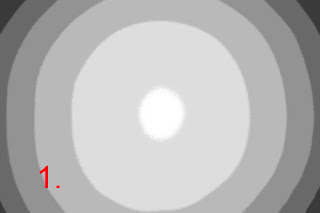 A snoot, as you may know, is a tube or cone used to restrict the light from a flash or other light source to a narrower beam. I wanted a snoot that, instead of throwing a fuzzy blob of light, created more of a spotlight effect. I designed and built one for this purpose.
A snoot, as you may know, is a tube or cone used to restrict the light from a flash or other light source to a narrower beam. I wanted a snoot that, instead of throwing a fuzzy blob of light, created more of a spotlight effect. I designed and built one for this purpose.Usually when a snoot is used, the gentle transition from light to dark that is cast is considered desirable. When you want a crisper edge to the transition you need to address two issues:
- The usually relatively short snoot compared to the relatively large light source surface (i.e. the flash head) means you will naturally have a fuzzy light edge thrown on the subject.
- Unless great care is taken, the inside of a snoot is prone to reflect light off the snoot walls causing stray light to reduce constrast of the edge transition.
Using optics to focus the light beam would be an obvious choice to address these problems. If you don't want to use optics, you need another approach. I did this by designing a long snoot with carefully sized baffles inside to block all but the beam of light I wanted to throw. Total cost was a couple dollars worth of materials.
A detailed explanation of the design and construction of this snoot is available on my Web site.
So, how good a job does it do? You be the judge. The spotlight on this cheeseball lounge singer is from the Snootier Snoot.






